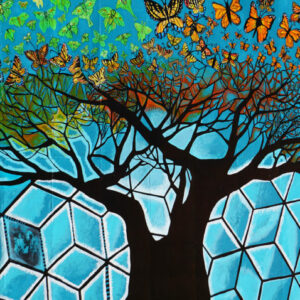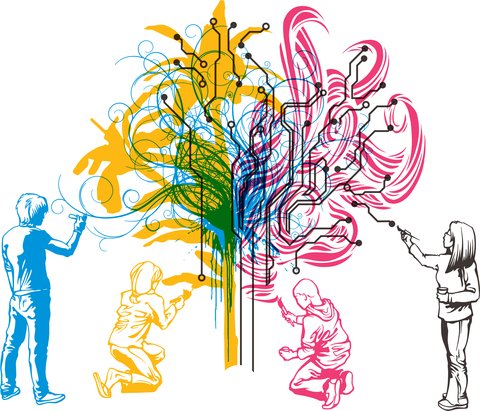In this blog post, we will explore what expressive arts therapy is, the different types of expressive arts, how it works, who it can help, and some of the benefits associated with it. We will also discuss some of the limitations of expressive arts therapy and provide resources for those who are interested in learning more.
Contents
Understanding Expressive Arts Therapy

Expressive arts therapy is a form of therapy that utilizes creative expression through various art forms. Additionally, this type of therapy has been around for many years and is beneficial for numerous individuals.
Theory Behind Expressive Arts Therapy
Expressive arts therapy is based on the belief that creative expression can be healing and therapeutic. As a result, this type of therapy can be used to help individuals express themselves in a safe and non-judgmental environment. In this manner, it can help individuals heal from physical, emotional, and spiritual wounds.
Postulates of Expressive Art Therapy
There are four main postulates of expressive art therapy:
- The first postulate is that creative expression is universal. This means that everyone can express themselves creatively.
- The second postulate is that creative expression is healing. This means that expressing oneself through art can be beneficial for mental, emotional, and physical health.
- The third postulate is that creative expression allows individuals to access emotions and feelings that may be difficult to express in words.
- The fourth postulate is that creative expression can be used to promote growth and change. This means that expressive arts therapy can help individuals develop new ways of thinking and behaving.
Types of Expressive Arts
There are many different types of expressive arts, including but not limited to:
- Poetry
- Painting
- Drawing
- Sculpting
- Photography
- Storytelling
Expressive Arts Vs. Art Therapy
There is some confusion about the difference between expressive arts therapy and art therapy. For instance:
- Expressive arts therapy refers to the use of creative expression through various art forms as a form of therapy.
- Art therapy, on the other hand, is a form of therapy that uses art as a means of assessment and intervention.
History, And Development
Expressive arts therapy has its roots in various psychological and educational movements. For instance, some of the early pioneers of expressive arts therapy include:
- Jung was a Swiss psychiatrist who believed that creative expression could be used to access the unconscious mind.
- Naumburg was an American educator who developed the concept of art therapy.
- Winnicott was a British psychiatrist who believed that creative expression could be used to promote emotional development.
Expressive arts therapy began to gain popularity in the United States in the 1970s and 1980s. During this time, there was an increased interest in the use of creative expression for therapeutic purposes. However, this therapy is now practiced all over the world and is beneficial for a wide variety of populations.
Unfolding Expressive Therapy

Unlike traditional forms of therapy, this therapy is often non-linear and unpredictable. Expectedly, the therapeutic process often unfolds in its own unique way.
Who Can It Help
Expressive arts therapy can be beneficial for anyone interested in exploring their creative side. Especially, this type of therapy can be helpful for those who have difficulty expressing themselves verbally.
Expressive arts therapy can also be helpful for those who are dealing with difficult emotions or life circumstances. As a result, this type of therapy can help individuals to process and understand their feelings.
What To Expect
When working with an expressive arts therapist, you can expect to engage in various art activities. For instance, these activities may include painting, drawing, sculpting, photography, poetry, and storytelling.
You will also be encouraged to express your thoughts and feelings about the art you are creating. Thus, the therapist will create a safe and non-judgmental environment for you to explore your creative side.
How Does It Work
Expressive arts therapy is based on the belief that creative expression can be healing and therapeutic. Thus, this type of therapy allows individuals to express themselves in a safe and non-judgmental environment.
However, the therapist will often use an unstructured approach. It means that they will allow the therapeutic process to unfold naturally. Since the goal is to allow individuals the freedom to explore their thoughts and feelings.
Techniques Used In Expressive Therapy
Many different techniques can be used in this therapy. However, some of the most common techniques include:
- Collage
- Journaling
- Dream Interpretation
- Sandplay Therapy
Evaluating Expressive Therapy
When evaluating expressive arts therapy, it is important to consider the individual’s goals and objectives. Because this type of therapy should be tailored to meet the specific needs of the individual.
Benefits of Expressive Therapy
There are many benefits of this therapy. However, some of the most common benefits include:
- increased creativity,
- improved coping skills,
- increased self-awareness,
- improved communication skills,
- increased ability to express emotions, and
- improved mental and emotional well-being,
Limitations of Expressive Therapy
Just like other therapies, this therapy is not without its limitations. For instance, some of the most common limitations include:
- need for trained therapists,
- potential for emotional overload,
- reliance on the therapist’s artistic ability,
- limited range of topics that can be addressed.
Why Consider It
If you are looking for a way to:
- improve your mental and emotional well-being,
- increase your self-awareness, or
- learn new coping skills,
then expressive art therapy may be right for you.
Finding an Expressive Therapist
If you have an interest in finding an expressive arts therapist, there are many resources available.
How To Find One
The best way to find an expressive arts therapist is to:
- Search online directories,
- ask your doctor or mental health professional for a referral, or
- contact your local art therapy association.
- check with your local mental health center or hospital.
What To Look Out For
When looking for an expressive arts therapist, there are some things you should look out for. For instance, make sure the therapist is:
- licensed and insured,
- trained in expressive arts therapy,
- able to provide you with references, and
- someone you feel comfortable working with.
Red Flags To Avoid
There are some red flags that you should be aware of when looking for an expressive arts therapist. These include therapists who are/:
- make you feel uncomfortable,
- cannot provide you with references, and
- not trained and licensed in expressive arts therapy.
Persuing Training In Expressive Arts Therapy

If you have an interest in becoming an expressive arts therapist, there are a few things to keep in mind.
- First, while there are many different types of expressive arts therapies; they all share a common foundation in the use of art as a means of communication and self-expression.
- Second, most training programs will require both classroom learning and clinical experience.
- And lastly, while there are many different ways to become certified; the most important thing is to find a program that is accredited by a reputable organization.
NOTE: We invite you to list yourself on Therapy Mantra’s Expressive Arts Therapist Directory.
Hearing From Experts
“Expressive arts therapy is a powerful tool that can help individuals heal from physical, emotional, and spiritual wounds. In addition, it can help individuals of all ages. And can be tailored to meet the specific needs of the individual.
If you are looking for a way to improve your mental and emotional well-being; I would highly recommend exploring expressive arts therapy.” – Licensed Therapist, TherapyMantra
“Expressive arts therapies are a powerful modality for healing and self-expression. Also, I have seen firsthand the transformative power of these therapies with my clients.” – Rachelle Goldstein, LMFT
Case Study
“I was really struggling after my divorce and didn’t know how to cope. My therapist suggested expressive arts therapy and it has really helped me. In addition, I’ve learned how to express my emotions healthily and I feel so much better.”
-Expressive Arts Therapy Client
Resources
There are many resources available for those interested in expressive arts therapy. However, some of the most common resources include:
- The American Art Therapy Association: This organization provides information on art therapy and maintains a directory of art therapists.
- The Association for Creative Expression and Therapy: This organization provides information on expressive arts therapies and maintains a directory of expressive arts therapists.
Conclusion

Expressive arts therapy is a concept that is still relatively new. However, it is a powerful tool that can help individuals heal from physical, emotional, and spiritual wounds.
If you are looking for a way to improve your mental and emotional well-being, then this therapy may be right for you. Furthermore, be sure to consult with a therapist who has a license and experience. And, if you have any questions, be sure to check with the resources listed above.
A Word From Therapy Mantra
Your mental health — Your psychological, emotional, and social well-being — has an impact on every aspect of your life. Positive mental health essentially allows you to effectively deal with life’s everyday challenges.
At TherapyMantra, we have a team of therapists who provide affordable online therapy to assist you with issues such as depression, anxiety, stress, workplace Issues, addiction, relationship, OCD, LGBTQ, and PTSD. You can book a free therapy or download our free Android or iOS app.


